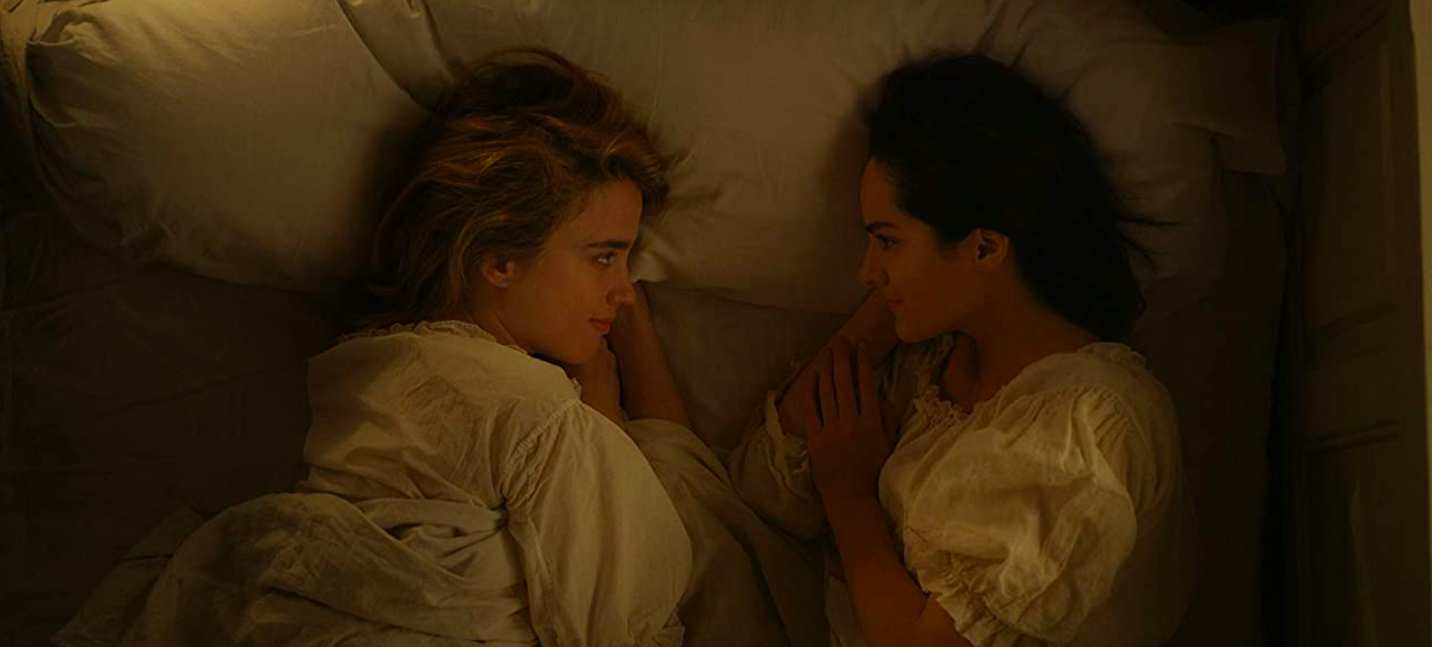In a year when so much suffering was coupled, for many people, with so little to do, it’s unsurprising that the denizens of the internet flocked to social media to search for modes of escapism. In early spring, parts of the social internet were swiftly overtaken by the Cottagecore aesthetic: an idyllic representation of Western countryside lifestyles featuring flowy dresses, floral arrangements, and most importantly, a romanticized, voluntary separation from most of society. Notably, Cottagecore is particularly popular within the LGBTQ+ community. To answer the question of why, we need to turn no further than to humanity’s other great distraction from the dumpster fire of 2020: film. Portrait of a Lady on Fire became available to stream on Hulu in early 2020, and like many of my queer friends, I found myself watching it over and over again, taking solace in the film’s gorgeous setting and cinematography, the earnestness of Marianne and Héloïse’s love, and the simple treasure of the existence of such artful queer representation.
Portrait of a Lady on Fire is, by all accounts, a visually moving film. Set on a remote island off the coast of France, the film’s cinematography and rustic color design highlight the beauty of its cliffs and fields, while also capturing their wildness and loneliness. Its interiors convey this isolation as well; Marianne stays in a large, white room which was designed for entertainment, but instead remains unused and undecorated. Each shot of this film is picturesque, painterly in its composition and often dominated by one family of color. We see the world through the lens of one of Marianne’s paintings, beautiful and yet simple, our eyes always knowing where to look (hint: it’s often at Héloïse). Not only is the arcadian artistry of the film extremely praiseworthy, but watching it in the spring of 2020, I couldn’t help but feel struck by its perfect illustration of the tenets of the Cottagecore aesthetic.
Portrait of a Lady on Fire captures the vibe of Cottagecore not only visually, but also in its ideals of lifestyle as well. The film is undeniably quiet and slow-moving, another aspect of Cottagecore escapism which seeks peace from the bustle of contemporary life, without the turmoil of a pandemic. The first act lasts almost an hour, taking its time to gently acquaint the audience with its mostly deserted setting and the handful of characters who do occupy it, as well as the events that brought each of them to such an out-of-the-way location. Over the course of fifty minutes, we watch Marianne make the tedious journey to the island house and learn of the unusual conditions of her commission, meet Sophie, the housekeeper, and learn of the death of Héloïse’s sister which necessitates Héloïse’s marriage and her portrait. However, in contrast to the leisurely nature of the first act’s pace, the climactic sequence of the film—Marianne and Héloïse’s swift goodbye once Héloïse’s mother returns to the island—lasts only four minutes. This structure serves to highlight the intangible antagonist of the film: the limited time Marianne, Héloïse, and Sophie have to live in the newer, freer world they enter once Héloïse’s mother leaves for Milan.
This “new world” the three young women enter in the second act of the film gets at the heart of why Cottagecore is so attractive to many queer people, especially women. It is in this world, alone in a vast house on a remote island, truly unsupervised for perhaps the first time in their lives, that these women find the liberty to simply exist as they are—without the fear of stigma or the burden of social expectation. Sophie is able to get an abortion, Marianne and Héloïse flirt and make love, and all three women flaunt social roles and bond as friends, playing cards and discussing the meaning of Greek mythology. The sense of dread building to the climax comes entirely from the knowledge that this alluringly happy moment will soon end, for despite the heaviness of Sophie’s abortion and Héloïse’s impending marriage, the independence the women claim for themselves does indeed feel joyous. The late-night bonfire, beachside kisses, and sensual afternoon modeling of Portrait of a Lady on Fire arguably capture the pinnacle of the sapphic Cottagecore ideal of escaping from the pressures of society and one’s old life, until, of course, it all inevitably comes to an end.
Although the freedoms of women and queer people in the eighteenth century were far more limited than they are today, as many of the tragic events of 2020 remind us, our world is still plagued by inequity. The liberation and independence Marianne, Héloïse, and Sophie find in their time alone on that lonely French island illustrates exactly why the escapist ideal of Cottagecore has become such a haven for queer people (and other marginalized groups), who not only are likely to have felt unsafe or trapped at some point in their real lives, but also who have historically been excluded from the narrative of the very same rural Western lifestyle Cottagecore romanticizes. Thus, Portrait of a Lady on Fire not only gives us insight into the sapphic appeal of Cottagecore as an aesthetic, but also succeeds as an act of reclamation—reasserting the existence of queer people throughout history, even if we’re only now, finally, starting to recognize them.


